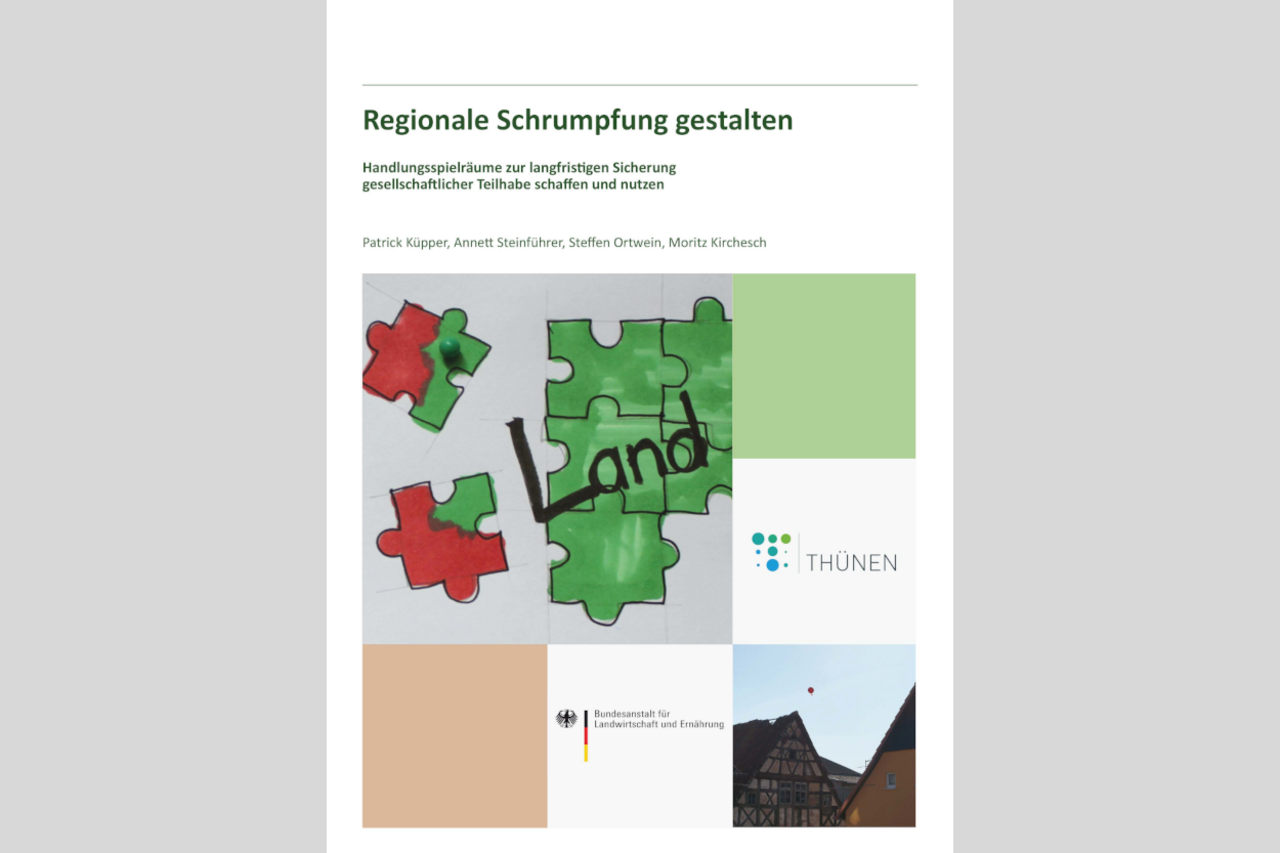Project
Processes of regional shrinkage: measures and strategies

For decades many regions in Germany have been affected by population decline and aging. “Shrinkage”, as this path of development is often called in the German debate, comes about due to overlapping economic, social and demographic changes. Although shrinkage is far from being a new topic, the regional scale of shrinkage remains neglected in both the scientific and the political discourse.
Background and Objective
Reconfiguring and restructuring shrinking regions is challenged by the complexity of the respective processes along with limited opportunities of change and inadequate support schemes. In the regions and local communities, the acceptance of the process and the handling of the problematic consequences of regional shrinkage vary: on the hand, many local activities still intend to impede or slow down shrinkage. On the other, there is a wide range of adaptation measures and strategies to actively manage the process. Yet, very often these experiences are not known in other shrinking regions. Given this background we identified the major challenges of regional shrinkage and discussed options for action. Our spatial focus was on rural areas in Germany, but we also took experiences from reconfiguration and restructuring processes in cities and medium-sized towns into account.
Approach
Between Autumn 2012 and Spring 2013 we conducted a series of workshops with local and regional practitioners, scientists from different disciplines as well as with representatives of federal and Länder ministries. They presented concrete examples, good practices and adaptation strategies. Getting to know distinct perspectives on shrinkage and exchanging different experiences brought about new insights in dealing with processes of regional shrinkage. By the end of the project we formulated and published policy recommendations and open research questions.
Data and Methods
The project built upon literature analysis as well as an intense knowledge exchange of different stakeholders during three thematic workshops.
Results
Thünen-Contact

Involved Thünen-Partners
Involved external Thünen-Partners
- Bundesanstalt für Landwirtschaft und Ernährung (BLE)
(Bonn, Deutschland)
Duration
2.2012 - 10.2013
More Information
Project status:
finished
Publications to the project
- 0
Steinführer A (2015) "Landflucht" und "sterbende Städte" : Diskurse über räumliche Schrumpfung in Vergangenheit und Gegenwart. Geogr Rundsch(9):4-10
- 1
Steinführer A, Küpper P (2014) Wie lässt sich Schrumpfung gestalten? LandInForm(3):14-15
- 2
Küpper P, Maretzke S, Milbert A, Schlömer C (2013) Darstellung und Begründung der Methodik zur Abgrenzung vom demografischen Wandel besonders betroffener Gebiete [online]. Braunschweig: Johann Heinrich von Thünen-Institut, 20 p, zu finden in <http://www.demografie-portal.de/SharedDocs/Arbeitsgruppen/DE/2012/Ergebnisse/AG_D_Methodik_Abgrenzung.pdf?__blob=publicationFile&v=6> [zitiert am 10.12.2013]
- 3
Küpper P, Steinführer A, Ortwein S, Kirchesch M (2013) Regionale Schrumpfung gestalten : Handlungsspielräume zur langfristigen Sicherung gesellschaftlicher Teilhabe schaffen und nutzen. Braunschweig: Johann Heinrich von Thünen-Institut, 57 p

![[Translate to English:] [Translate to English:]](/media/_processed_/2/0/csm_LV_Bei_Hornburg_Quelle_Johanna_Fick_neu_da89674833.jpg)
![[Translate to English:] [Translate to English:]](/media/_processed_/2/0/csm_LV_Bei_Hornburg_Quelle_Johanna_Fick_neu_3aae309567.jpg)




